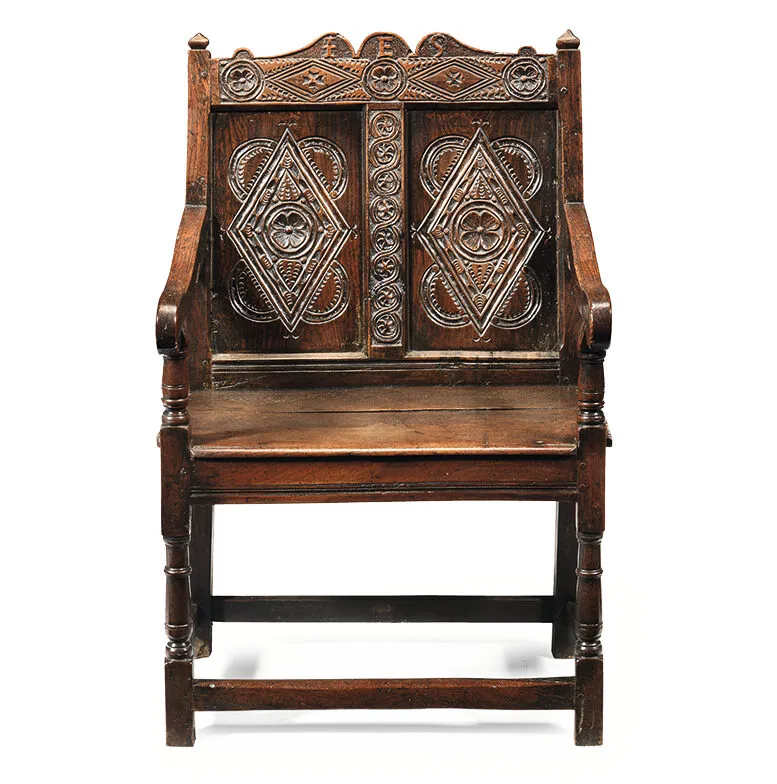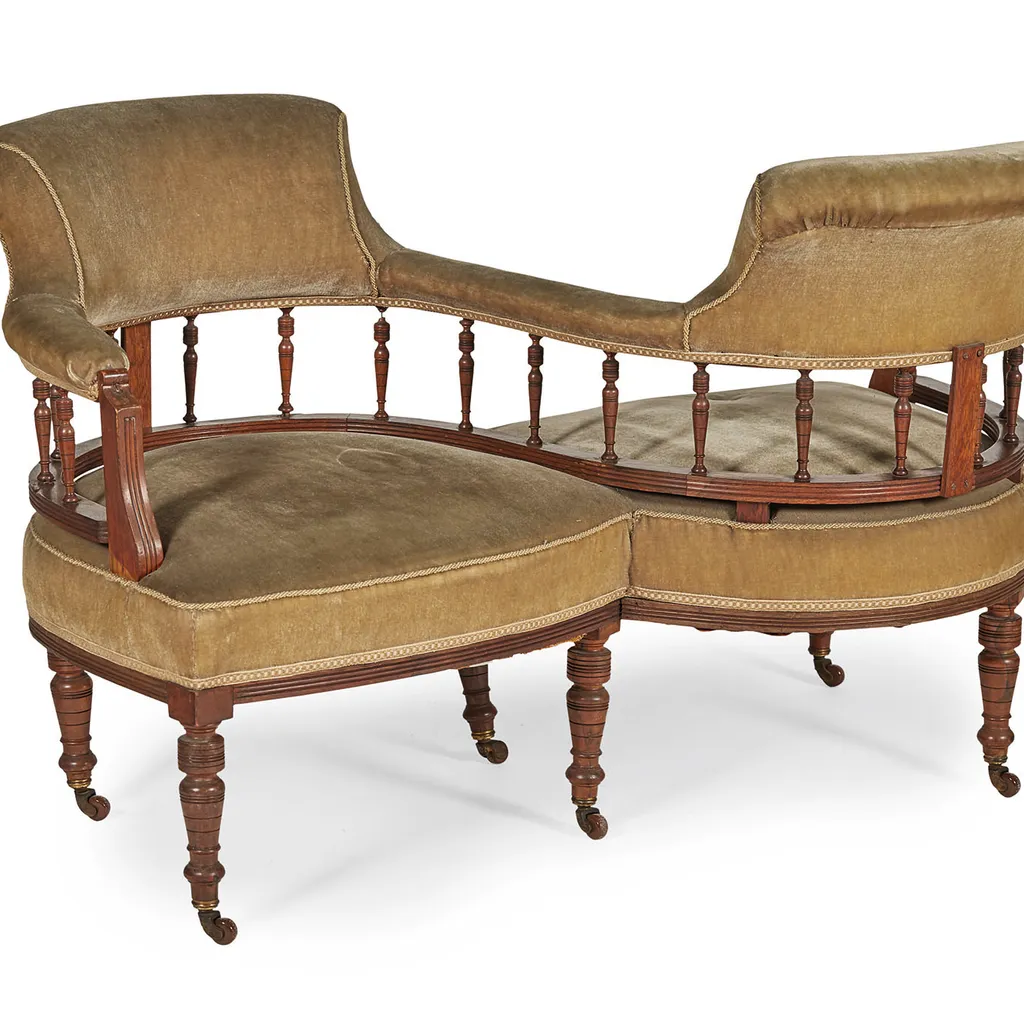Small settees, now often referred to as love seats, gradually appeared in the 17th century and evolved into a more comfortable replacement for the wooden settle. These small settees allowed for two people to sit together and facilitated private conversations in a public space. On a more practical note, they also accommodated women’s fashions, from the panniers or side hoops of the 17th and 18th centuries to full-blown crinolines of the 19th century.
The earliest types of settee were made from oak and looked very much like an armchair, but of generous double form. The back may have been crested and elaborately carved, over a plain wooden seat; the arms and legs with turned details.

George II and George III examples from the 18th century were upholstered, fitted with a cushion and featured a tall wing back. The legs would typically have been walnut and of curving cabriole form. As the century progressed, the carving on the legs and feet became more elaborate, featuring details such as mask, shell, or anthemion designs on the legs, while simple pad feet became carved claw and ball.
It wasn’t until the mid 19th century that the love seat in the form we think of today arrived: an upholstered double armchair whose seats faced in opposite directions, united by an S-shaped frame. During the Industrial Revolution, as the middle classes became increasingly prosperous, there followed a taste for elaborate interiors to reflect an individual’s wealth and status, and novel furniture forms were popular – the S-shaped seat being one such piece, known as a ‘social seat’ at the time.

It wasn’t until the 20th century that the social seat was redefined as a love seat. The use of this romantic name was a powerful marketing tool. It also gave rise to the idea that the chair was first invented to enable lovers to enjoy intimate face-to-face conversation, while being physically divided by an armrest.
While this notion fits with our understanding of the Victorian sense of propriety, the name was actually applied retrospectively to small settees by antiques dealers in the trade, where it is common to give a recognisable name to furniture types.

Love seats remain popular in the 21st century; their neat proportions are ideal in rooms with limited space, and they’re often paired with a larger sofa. The Victorian S-shaped love seat is popular with interior designers who use such pieces as a focal point within a room, or to provide a link between two parts of a large room. The form has also been applied to garden furniture, where it makes an attractive feature in an outdoor setting.